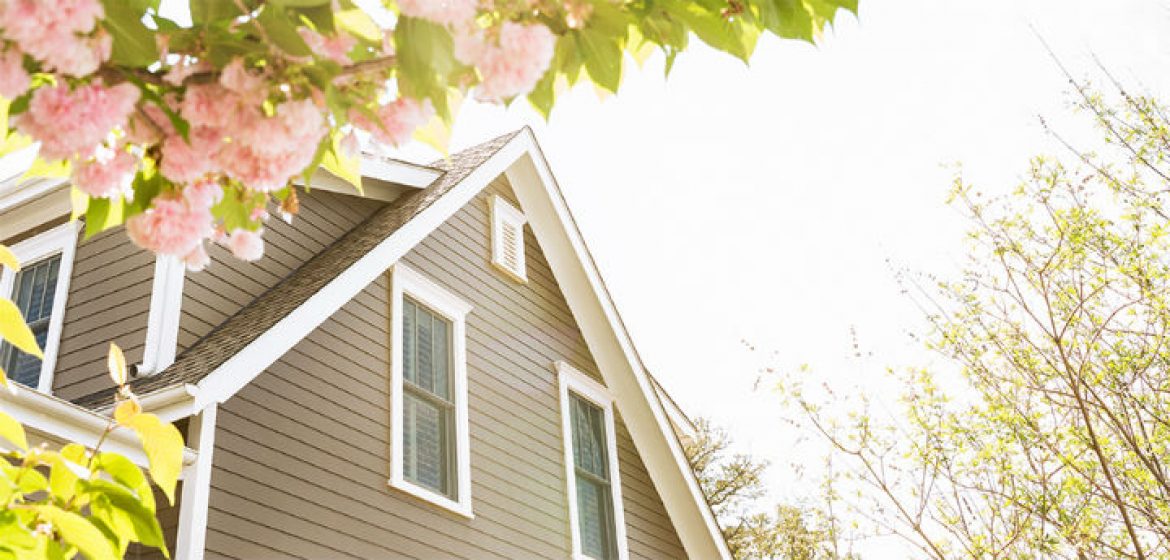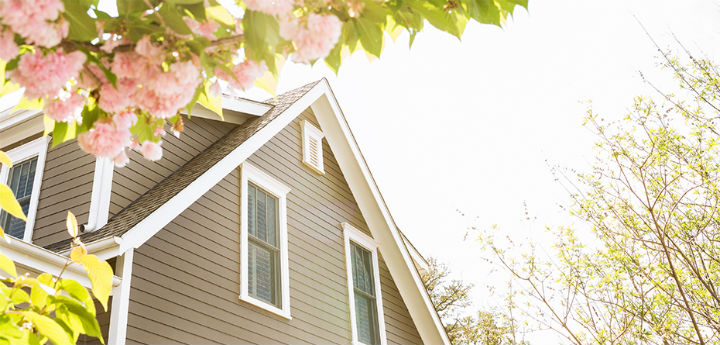3 Tips for Choosing Your Custom James Hardie Siding Color


Color, in a way, defines your home, reflecting your personality. It has both intrinsic and extrinsic value. The right color can raise your property value while the wrong color can disgrace the lot. Since it costs thousands to paint your siding and even more to replace it, the pressure to get the color right the first time is totally understandable.
One of the many reasons you likely chose James Hardie Siding is for the beautiful color. James Hardie siding is equipped with patented ColorPlus Technology finishes that you can count on.
When it’s made, the siding receives multiple coats of color, specifically 50 percent more than average house painters use. Between each coat, the finish is cured, creating a chemical reaction that bonds the paint color to the boards. This helps the bonds stand up to environmental elements and significantly reduces the risk of peeling, chipping, or cracking prematurely.
Because of the way the coloring is applied, the finish will also be smoother and more consistent. You won’t have drips, mistakes, or areas with more paint than others. This is a common problem with regular paint, even if you have a professional painter do the job.
Vinyl siding and regular exterior home paint tend to fade in the sun, a problem if you live in sunshine-dominated states like California and Arizona. After just a few years, the paint on vinyl and wood siding will lose much of its luster and appeal. The ColorPlus Technology on James Hardie Siding is specifically formulated to resist UV rays, defying fading and keep your siding looking great.
Another beneficial feature of installing James Hardie Siding is the 15-year limited warranty – if the color fades, peels, cracks, or chips prematurely, your warranty may cover the repairs or the repainting. You’ll save thousands because you don’t have to paint as frequently.
The warranty won’t cover the cost of choosing the wrong color, however. With thousands of paint swatches available, you’ll probably feel a little overwhelmed when choosing the right one. For that reason, here are some helpful suggestions for choosing the perfect color:
1. Create Harmonic Balance
One of the basic tools for choosing colors is the color wheel. It’s divided into 12 sections with eye-pleasing and harmonic color combinations that are designed to create balance. You can use this wheel to choose the dominant and trim colors of your house as well as complement your surrounding area.
The most common combinations for home paint are analogous colors, which are right next to each other on the color wheel. They vary only slightly in hues, and they work well if you want to limit contrast and keep your home’s colors more serene.
Next, there are complementary colors, which are opposite on the color wheel. They create high contrast for those seeking a bold, vibrant look.
If you want a combination of bold and serene, try a triad. This is when you select a color and use the two colors on either side of the color’s direct complement. It creates low contrast, but high visual interest.
2. Decide Between Warm and Cool Colors
The color wheel is separated into two tones: warm and cool. These tones can help you narrow down colors based on how you’re feeling. It’s fairly easy to recognize the difference between warm and cool colors based on the associations you feel when you look at them.
When you think of the word “warm,” you probably think of fire, so it makes sense that reds, yellows, and oranges make up this side of the spectrum. These colors evoke emotions of excitement and alertness. It’s great for making a statement or blending into a warmer atmosphere.
On the flip side, the word “cool” probably makes you think of water and nature, so blues, greens and purples are considered cool tones. They create a feeling of peace and serenity that many homeowners crave.
There are also neutral colors, which are extremely popular for houses. They evoke little emotion, but still create a beautiful finish that’s attractive and great for resale. These are a colors like off-white, taupe, putty, gray, and brown.
To help you decide on the best colors for your purpose, James Hardie has developed a catalog called Live Colorfully. You can select which colors achieve the feeling you want to generate in your home.
3. Eliminate the Ones You Hate
You might have a hard time choosing the colors you love for your home, but you can at least take the ones you despise out of the equation. It can be overwhelming to look at thousands of color swatches, but if you remove two-thirds of them because you know you’ll never paint your house that color, you can save yourself a lot of energy.
After you’ve eliminated some colors, you can make a list of viable options. You could visit a showroom and compare these colors side by side, but it may be easier to use James Hardie’s ColorPlus selection chart. You can create an online side-by-side comparison of your favorite colors to help narrow down your options.
Speak With a Contractor About Your Color Choice Today!
You don’t have to go through the sometimes harrowing process of choosing a home color alone. Our team at Siding Pro can help you decide on the color that matches your home, neighborhood, and personal preferences. We have a gallery where you can view different color combinations, and we can make recommendations based on our years of experience installing Hardie siding to perfection. For more information about our services, contact us today!






